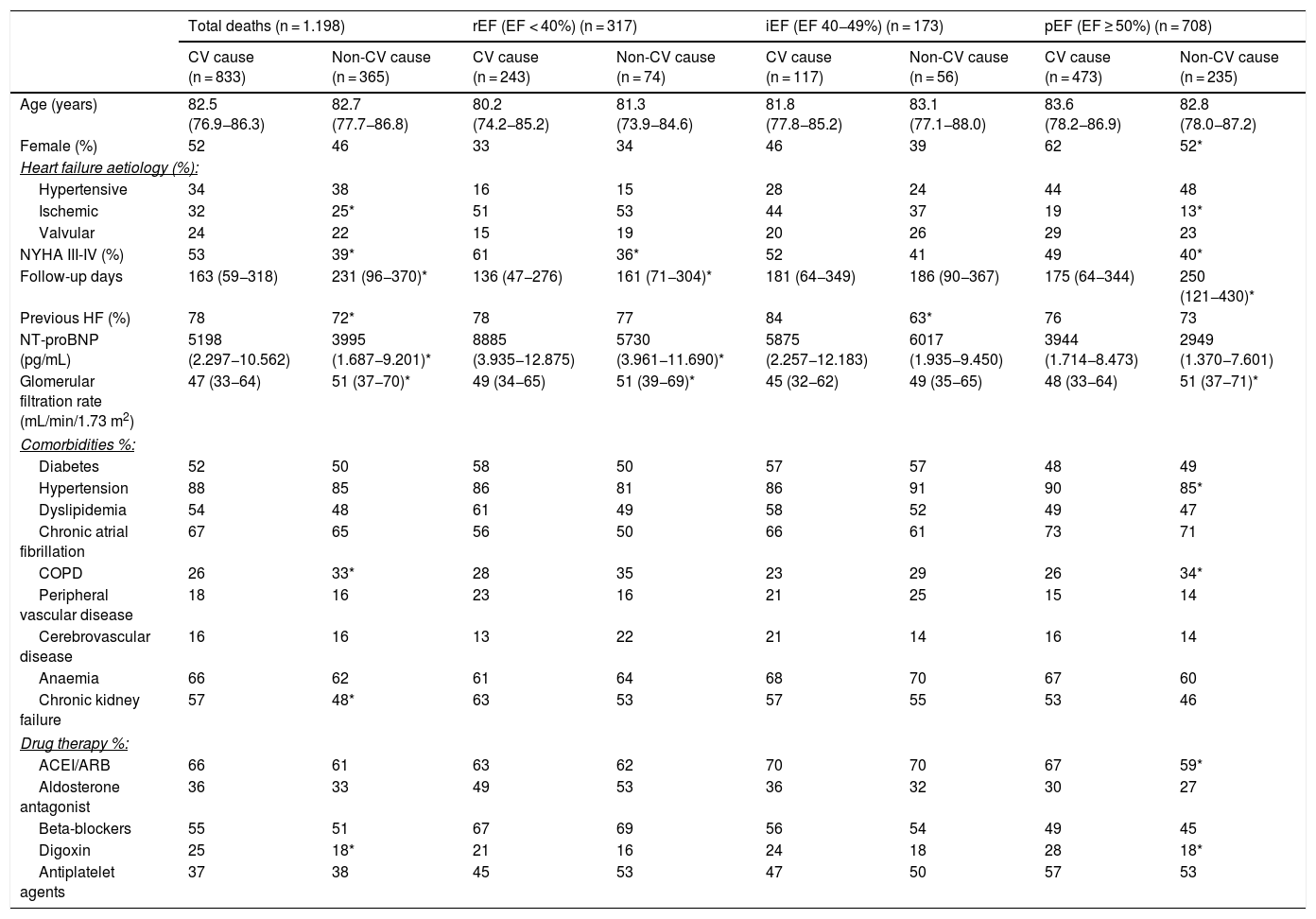There are few data in the Spanish population about the causes of death in patients admitted to Internal Medicine departments for heart failure (HF). Their study according to left ventricular ejection fraction (reduced: rEF, mid-range: mEF, and preserved: pEF) could improve the knowledge of patients and their prognosis.
MethodsProspective multicentre cohort study of 4144 patients admitted with HF to Internal Medicine departments. Their clinical characteristics, mortality rate and causes were classified according to pEF (≥50%), mEF (40%–49%) and rEF (<40%). Patients were followed-up for a median of one year.
ResultsThere were 1198 deaths (29%). The cause of death was cardiovascular (CV) in 833 patients (69.5%), mainly HF (50%) and sudden cardiac death (SCD, 7.5%). Non-cardiovascular (Non-CV) causes were responsible for 365 deaths (30.5%). The most common Non-CV causes were infections (13%). The most frequent and early cause in all groups was HF. Patients with pEF, compared to the other groups, had lower risk of SCD and higher risk of infections (P < .05). The causes of death in patients with mrEF were closer to those with pEF.
ConclusionsThe causes of death in patients with HF were different depending on EF strata. Patients with mEF and pEF, due to their high comorbidity and higher frequency of NoCV death, would require comprehensive management by Internal Medicine.
Los datos disponibles de las causas de muerte en pacientes ingresados por Insuficiencia Cardíaca (IC) en Servicios de Medicina Interna y en población española según Fracción de eyección (FE) reducida (FER), preservada (FEP) e intermedia (FEI) son escasos. Su estudio puede mejorar el conocimiento de estos pacientes y su pronóstico.
MétodosEstudio de cohortes multicéntrico y prospectivo de 4144 pacientes que ingresaron por IC en unidades de Medicina Interna. Se registraron sus características clínicas, tasa de fallecimientos y sus causas agrupados según FEP (≥ 50%), FEI (40%–49%) y FER (<40%) durante una mediana de seguimiento de un año.
ResultadosSe registraron 1198 fallecimientos (29%), de los que 833 fallecieron por causas cardiovasculares (CV) (69,5%), fundamentalmente por IC (50%) y por muerte súbita (MS) (7,5%); y 365 por causas no cardiovasculares (NoCV) (30,5%), principalmente por infecciones (13%). La causa más frecuente y temprana en todos los grupos fue la IC. Los pacientes con FEP tenían menor tasa de MS y mayor de infecciones (P < ,05). Las causas de muerte en FEI fueron más parecidas a las de FEP.
ConclusionesLas causas de muerte en pacientes con IC fueron diferentes dependiendo del tipo de FE. Los pacientes con FEI y FEP, por su elevada comorbilidad y mayor frecuencia de muerte NoCV, son los que más se beneficiarían de un manejo integral por parte de Medicina Interna.











